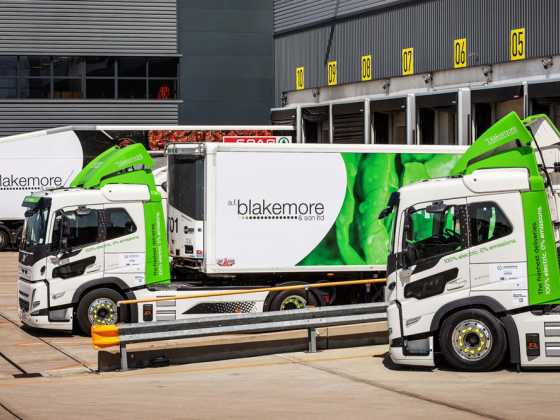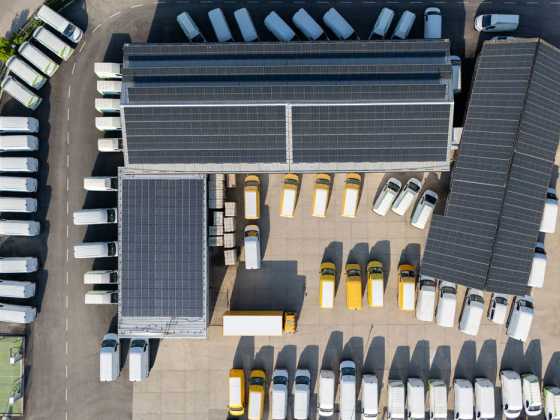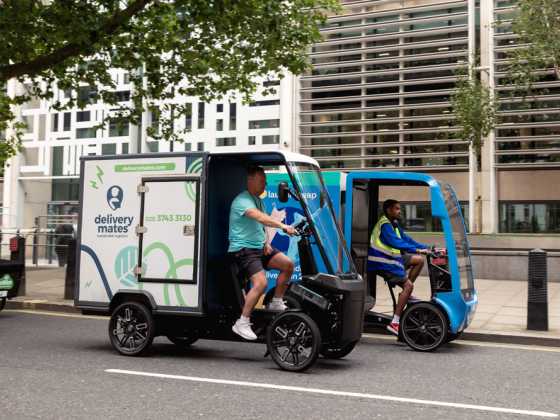The commercial climate challenge
The Freight Transport Association’s climate change policy manager Rachael Dillon looks at the air quality challenge faced by the logistics industry and the achievements already made to meet increasingly lower targets for air pollutants
 The impact of atmospheric pollution on human health is widely reported – as is the negative contribution to air quality made by cars, vans and lorries. We are increasingly seeing public calls for banning diesel from our city centres, but how feasible is this?
The impact of atmospheric pollution on human health is widely reported – as is the negative contribution to air quality made by cars, vans and lorries. We are increasingly seeing public calls for banning diesel from our city centres, but how feasible is this?
Emissions are continuing to fall, but as our understanding of their impact on human health increases so ever-higher standards are set for industry to achieve.
Acceptable limits
Total local air quality emissions have been decreasing for more than 20 years. This is expected to continue for the foreseeable future, especially as the Euro VI standard for commercial vehicles takes hold and Euro 6 for cars and vans in due course.
Euro standards define the acceptable limits for exhaust emissions of new vehicles sold in EU member states. They are defined in a series of European Union directives staging the progressive introduction of increasingly stringent standards.
Compliance is determined by running the engine at a standardised test cycle. Non‑compliant vehicles cannot be sold in the EU, but new standards being introduced do not apply to vehicles already on the road.
The UK has been seeking to address air quality for many years, but its efforts have not gone far enough under EU law.
In April this year the UK Supreme Court ruled in favour of environmental lawyers’ activist group Client Earth that the UK Government was in breach of its legal requirements to improve air quality in cities around the country. Consequently the Department of Environment Food and Rural Affairs (Defra) is now charged with coming up with a new plan that will enable the UK to meet its obligations as quickly as possible.
This is a less dramatic development than first thought as Defra had been planning to produce such a plan by the end of the year anyway. However, the verdict adds extra impetus to this process and potentially raises the bar for what would count as an acceptable package of measures – any ‘weak’ plan is liable to another legal challenge.
Low Emission Strategy
Scotland is also impacted by the Supreme Court verdict as it is the UK as a whole that is in breach of the EU requirements. The Holyrood Government is continuing to develop its Low Emission Strategy which will need to demonstrate how it will address Scotland’s issues in the shortest feasible timeframe. We expect the final version of the Strategy to be published by the end of 2015.
Defra has published a consultation on its plan to reduce nitrogen dioxide (NO2) and cites the failure of Euro standards for cars and vans to adequately reduce emissions in real-world use as a major reason for the UK’s position. Cars and vans are considered to be the biggest source of noxious emissions due to sheer growth in vehicle numbers.
Failing to meet targets
Though the UK is not the only Member State to face problems, it is one of 16 countries that is failing to meet targets.
Early evidence indicates that Euro VI lorries and buses emit significantly fewer noxious emissions and Defra will monitor Euro 6 for cars and vans as they come to market. This is especially important given the recent emissions scandal. Defra is also developing a framework for Clean Air Zones (CAZs) for local authorities that may need to introduce Low Emission Zones (LEZs) and sets Euro VI and 6 as the objective to meet.
The Freight Transport Association (FTA) believes LEZs are a last resort as there are a host of other measures that can be implemented. History though has shown through the Greater London Low Emission Zone that vehicles such as HGVs have been targeted rather than cars (owned by the voting public). FTA believes there should be a consistent national approach rather than localised schemes. It is essential that local authorities target all vehicles and not just single out trucks – which are providing essential goods and services to our towns and cities.
The CAZs proposed by Defra will make it easier for businesses operating fleets across the UK and avoid a patchwork of differing standards. What FTA is also concerned about is timing – if sufficient notice is given of any LEZs that may be introduced, operators can effectively plan and renew their fleet. Euro VI trucks are being purchased now but it will take time to fully adopt. Looking at LEZ deadlines beyond 2020 will make it more financially viable for businesses to meet tighter regulations. But all modes of transport need to play their part.
Eight areas of the UK covering London, Birmingham, Leeds, Nottingham, Derby and Southampton are predicted to exceed EU NO2 limits in 2020 – these will no doubt consider LEZs. London is already set to introduce an Ultra Low Emission Zone from 2020. Modelling undertaken by Defra indicates that freight could be included in schemes in Birmingham and Leeds but no decision has been taken yet.
Reliance on diesel
But what about reducing our reliance on diesel? Defra cites electrification of the vehicle fleet as the most effective action for both air quality and carbon reduction and says such vehicles should have free access to CAZs. For freight it highlights opportunities for alternative fuels and low carbon technologies. However the cost and lack of refuelling infrastructure makes it difficult for operators to make the switch.
FTA supports road network improvements that will increase traffic flow and therefore reduce emissions. Improved public transport is also cited by Defra as a method of improving air quality. Defra’s consultation closes on 6 November and its plans will be submitted to the EU Commission by 31 December.
Congestion Charging Zone
Industry’s most pressing concern at the moment is getting ready for the ULEZ from 2020 in London which covers the congestion charging zone. There is also likely to be a requirement across Greater London for heavy duty vehicles probably around 2025. A new Mayor in 2016 could of course tip everything on its head, but the expectation is that there will be more action rather than less.
But it will not even necessarily stop there. Over the summer, Transport for London launched an Ultra Low Emission Delivery Plan aimed at deploying electric and hybrid vehicles in the capital. Within this, TfL has initiated a ‘Low Emission Commercial Vehicle’ project part of which appears to be aimed at defining what a post-Euro VI standard looks like – ie a requirement going beyond vehicles relying on 100 per cent diesel power.
So to conclude, whilst the immediate target for authorities will be to meet EU requirements and avoid fines, longer term they will be looking to continue to reduce emissions.
For some pollutants such as Particulate Matter there is no ‘safe’ level – the more you reduce them, the more you improve human health. So cities may also look to the EU’s vision of carbon (CO2) free city logistics as an equivalent aspiration for all transport emissions. The environmental impacts of transport must be tackled, but it’s about finding a sensible and cost‑effective approach to doing this which can still keep the goods and services flowing to the UK’s urban areas.
Further Information
Defra air quality 2015 consultation plans:
uk-air.defra.gov.uk/library/no2ten/
Freight Transport Association:
www.fta.co.uk/policy_and_compliance/environment/






